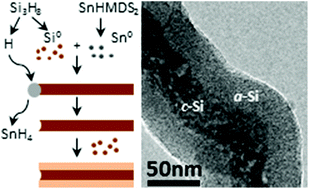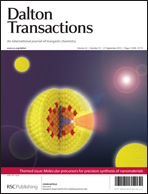Precision synthesis of silicon nanowires with crystalline core and amorphous shell
Abstract
A synthetic route to crystalline silicon (Si)

- This article is part of the themed collection: Molecular precursors for precision synthesis of nanomaterials

 Please wait while we load your content...
Please wait while we load your content...